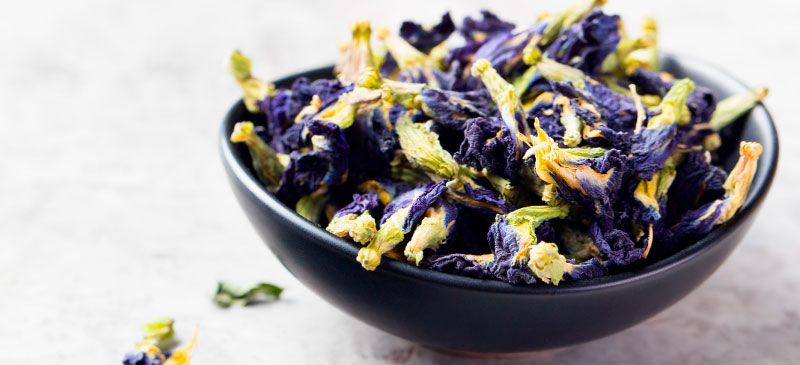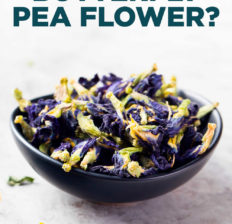This Dr. Axe content is medically reviewed or fact checked to ensure factually accurate information.
With strict editorial sourcing guidelines, we only link to academic research institutions, reputable media sites and, when research is available, medically peer-reviewed studies. Note that the numbers in parentheses (1, 2, etc.) are clickable links to these studies.
The information in our articles is NOT intended to replace a one-on-one relationship with a qualified health care professional and is not intended as medical advice.
This article is based on scientific evidence, written by experts and fact checked by our trained editorial staff. Note that the numbers in parentheses (1, 2, etc.) are clickable links to medically peer-reviewed studies.
Our team includes licensed nutritionists and dietitians, certified health education specialists, as well as certified strength and conditioning specialists, personal trainers and corrective exercise specialists. Our team aims to be not only thorough with its research, but also objective and unbiased.
The information in our articles is NOT intended to replace a one-on-one relationship with a qualified health care professional and is not intended as medical advice.
Butterfly Pea Flower Benefits + How to Use It
July 4, 2022

A number of herbal teas hold a lot of meaning in traditional systems of medicine, such as Ayurveda. One such type of anti-inflammatory tea is the kind made from butterfly pea flower.
In Ayurveda, a holistic system of medicine that’s been practiced for India for thousands of years, butterfly pea flower tea is called Anchan tea. It’s used in devotional ceremonies to represent love, serenity and protection, and it’s also associated with the powerful Hindu goodness named Aparajita (whose name means “the undefeated one”).
In addition to having spiritual significance, butterfly pea flower is full of health-promoting compounds, including antioxidants (such as anthocyanin), as well as pigments that allow it to naturally color foods and beverages.
What Is Butterfly Pea Flower?
Butterfly pea flower (Clitoria ternatea) is a plant native to Southeast Asia that’s commonly used to make herbal tea. It’s sometimes also called butterfly pea tea or blue clitoria ternatea.
It’s technically a perennial herbaceous plant in the Fabaceae plant family. Because this plant is high in protective antioxidants, it’s consumed in extract form to help fight free radicals and inflammation and promote overall health.
Butterfly pea flower tea is also used for beauty purposes, such as contributing to healthy-looking skin, hair and eyes.
Finally, because it has a rich blue or purple color when the plant is steamed in hot water, it’s utilized as a natural dye. It’s sometimes combined with water plus an acidic ingredient, such as lemon, which changes the pH of water, so its color changes from blue to violet.
Nutrition Facts
When used to make an herbal tea, butterfly pea is basically calorie-free and also contains virtually zero caffeine.
One cup of brewed butterfly pea tea contains about five calories or less and no caffeine, fat, protein, carbs or sugar.
Most of butterfly pea flower’s benefits are due to its supply of antioxidants, which are responsible for its signature blue color. It’s a great source of antioxidants, including:
- anthocyanin, such as ternatins, some of the same types found in superfoods like berries, cherries and red wine
- flavonoids
- kaempferol
- quercetin
- myricetin glycosides
- gallic acid
- p-Coumaric acid
It also contains cyclotides, microproteins that help form connective tissues in plants.
Benefits
What is butterfly pea flower good for? It’s known to help fight inflammatory responses, support a strong immune system, and protect the joints, brain, eyes and skin from damage.
Here’s more about how this plant can promote well-being while also contributing to a healthy appearance:
1. Rich in Antioxidants
Historically, butterfly pea tea was considered a natural remedy for symptoms of numerous ailments, including fever, inflammation, arthritic pain due to collagen degradation and diabetes, just to name a few.
Because it’s rich in antioxidants, butterfly pea flowers can help combat oxidative stress and free radicals, two major contributors to aging and disease development.
These specific compounds have been shown to help prevent growth of cancer cells, and they can also protect the liver, brain, heart, blood vessels and other organs from damage.
2. Has Natural Antimicrobial and Immune-Boosting Effects
Butterfly pea flower is believed to have antimicrobial and anti-inflammatory actions due to the presence of compounds like p-coumarin acid and delphinidin glucoside. Consuming this plant and tea may also fight against viruses and infections.
Research suggests that butterfly pea tea may help support healthy digestion and gut health, which is highly linked to immune function, and protect the gastrointestinal tract from spasms, nausea, heartburn and ulcers. It can also potentially support detoxification and the liver’s ability to remove harmful waste from the body, since it acts as a mild laxative and natural diuretic.
Additionally, Clitoria ternatea has been found to have anthelmintic properties, so it’s sometimes used to treat parasitic infections.
Another immune-enhancing effect of this plant is its ability to promote respiratory health. It can help remove mucus and fluids from the lungs and airways and reduce irritation and inflammation, which helps treat bronchitis, colds and coughs.
It’s also thought to be helpful for managing asthma and allergies. In Ayurvedic tradition, Clitoria ternatea flower was one of the most widely used ingredients in different preparations given to treat respiratory disorders.
3. Supports Cognitive Health
Some research, including on animals, suggests that Clitoria ternatea can boost levels of acetylcholine in the brain, which is a beneficial compound for focus, memory and other cognitive tasks.
Because of its ability to fight oxidative stress, butterfly pea flower might be helpful for slowing age-related memory loss and for generally supporting mental health, including by protecting against anxiety, effects of chronic stress, depression and ADHD.
4. Can Help Protect Your Vision
Antioxidants found within Clitoria ternatea can protect the eyes from free radical damage, including from the sun, irritants and effects of a poor diet. It might also help boost blood flow to the eyes.
Extracts and eye gels made from Clitoria ternatea are used in some cases to manage vision-related issues, such as glaucoma, damaged retinas, blurred vision, poor night vision and tired/dry/strained eyes.
5. Promotes Skin and Hair Health
Butterfly pea flower may be able to prevent signs of premature aging on the skin when used topically, such as loss of skin elasticity, fine lines, and uneven tone and texture.
There’s evidence that it can boost skin hydration and defend against sun damage due to antioxidants, such as polyphenols. Because it has anti-inflammatory properties, it may also help treat rashes, swelling, itching and dermatitis or allergies that affect the skin.
Yet another benefit is butterfly pea’s ability to help maintain a healthy scalp and hair health. It’s thought to help bring extra blood to the hair follicles and reduce inflammation, which might impair hair growth.
For this season, you’ll find it in some hair shampoos, conditioners and other hair products intended to reduce graying and hair thinning.
6. Aids in Metabolic Functions
Clitoria ternatea may help reduce hypertension (high blood pressure) and high cholesterol, assist in other cardiovascular functions, and stabilize blood sugar levels, as some animal research shows. Some studies show it can also protect against symptoms related to diabetes and insulin resistance due to ability to shun oxidative stress.
Like other high-antioxidant plants, it’s possible that butterfly pea can potentially help with weight loss and protect against obesity due its general metabolic benefits, although more research on this topic is needed.
Risks and Side Effects
What are the side effects of butterfly pea flower? It’s generally well-tolerated, but you shouldn’t start supplementing with it in extract form (especially in high dosages) if you have a serious existing medical condition, such as cancer, Alzheimer’s, dementia or diabetes.
Consult with your health care provider before using butterfly pea flower tea or extracts if you take daily medications or if you’re pregnant.
Is butterfly pea flower ever poisonous? It shouldn’t be when consumed in recommended/moderate amounts.
Always read directions carefully when using plant extracts, and stick to about one to three cups of herbal tea per day.
How to Use/Make
Clitoria ternatea is most often consumed as either a tea or extract, which are made with the leaves and flower petals of the plant. Look for Clitoria ternatea extract online or in some health food stores with large herbal sections.
What does butterfly pea flower taste like? It’s described as having a mild floral flavor with a touch of sweetness, similar to chamomile tea.
If you purchase blue pea tea, expect it to be a bright blue or light purple color. Look for this tea in dried form, most often from growers in Southeast Asia, such as Thailand, Vietnam or India.
To make butterfly pea tea at home:
- Use about 1–2 teaspoons of dried leaves and petals for every 8 ounce cup of tea.
- Pour very hot water over the dried leaves and petals, and let them steep for about 3 to 5 minutes. Watch as the water begins to turn a deep blue color.
- You can squeeze some lemon juice or lime juice into the tea if you want it to turn purple instead. In fact, in countries such as Vietnam and Thailand, a traditional recipe using butterfly pea (called nam dok anchan) includes a bit of sugar plus lime, which creates a unique taste similar to a “mocktail.”
- For some extra sweetness, add a bit of raw honey. You can improve the taste and health benefits by adding other ingredients too, such as raw ginger root, mint, cinnamon, hibiscus, lavender, and orange, lime or lemon peels.
Traditionally, butterfly pea tea is enjoyed as part of a soothing meditation, which began with an intention in mind. The idea is to watch the colors of the tea transform as you visualize yourself growing and changing.
Aside from making tea with it, try using it in cocktails or as a natural food dye, such as for desserts.
You’ll also find it in some cosmetics and even in gardening preparations used to help support nitrogen fixing crops.
Conclusion
- Butterfly pea flower (Clitoria ternatea) is a plant used to make nutrient-rich herbal tea or extract.
- The plant itself is native to Southeast Asia and is rich in antioxidants, such as polyphenols and anthocyanin, which give it a bright blue color.
- Benefits include having anti-inflammatory and antimicrobial properties; protecting the brain, skin and eyes; easing digestion; and supporting respiratory and metabolic functions.





